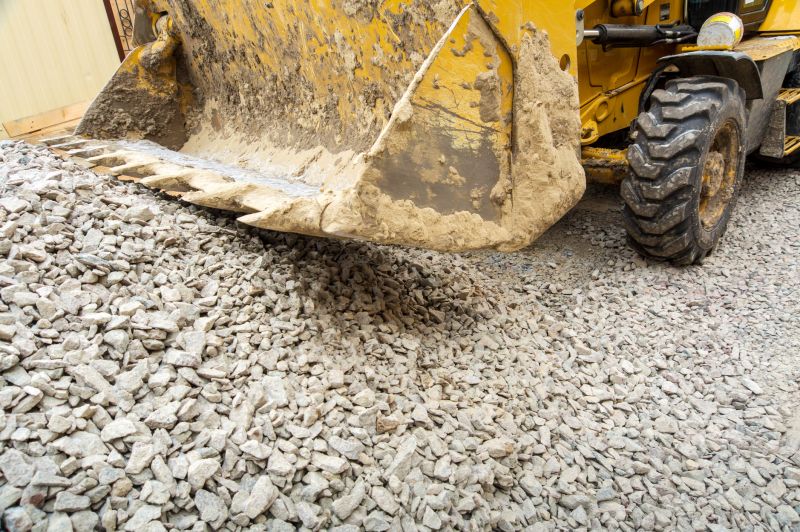Expert Picks For Effective Gravel Spreading Service Solutions
Choose from a curated selection of high-performance products to optimize your gravel spreading efficiency.
 When undertaking gravel spreading projects, selecting the right equipment and accessories can significantly influence the efficiency and quality of the work. Gravel spreading services often rely on a variety of tools designed to handle different scales and types of terrain. From manual tools suitable for small-scale projects to large machinery capable of covering extensive areas, the range of products available ensures that both DIY enthusiasts and professional contractors can find suitable options. Properly chosen products help ensure an even distribution of gravel, minimizing waste and reducing the need for rework.
When undertaking gravel spreading projects, selecting the right equipment and accessories can significantly influence the efficiency and quality of the work. Gravel spreading services often rely on a variety of tools designed to handle different scales and types of terrain. From manual tools suitable for small-scale projects to large machinery capable of covering extensive areas, the range of products available ensures that both DIY enthusiasts and professional contractors can find suitable options. Properly chosen products help ensure an even distribution of gravel, minimizing waste and reducing the need for rework.
Top Overall Option
Motorized Gravel Spreader
A motorized gravel spreader provides a versatile and efficient solution for distributing gravel over large areas. It typically features adjustable settings for spreading width and rate, ensuring an even application suited to various project sizes. Designed for durability and ease of use, this equipment can significantly speed up the gravel spreading process while maintaining consistent coverage. Ideal for both professional contractors and serious DIYers, a motorized spreader combines power and precision for effective material distribution.
Types of Products For Gravel Spreading Service
Manual Gravel Rakes
Handheld tools designed for small-scale spreading and leveling of gravel, offering precise control and maneuverability.
Push Gravel Spreaders
Lightweight, push-operated spreaders suitable for even distribution on driveways and pathways.
Motorized Gravel Spreaders
Powered devices that automate the spreading process, ideal for large areas and commercial projects.
Dump Trucks
Large vehicles capable of transporting and unloading significant quantities of gravel directly at the site.
Wheelbarrows with Gravel Attachments
Versatile carts that can be used to manually transport and distribute gravel in smaller areas.
Vibratory Plate Compactors
Machines used to compact gravel after spreading, ensuring stability and durability of the surface.
Gravel Leveling Bars
Tools designed to help level and smooth gravel after initial spreading for an even surface.
Landscape Blowers
Devices used to clear debris and fine particles from gravel surfaces after spreading.
Sprayers for Gravel Stabilization
Equipment used to apply binding agents or stabilizers to gravel surfaces for added cohesion.
Spreaders with Adjustable Width
Equipment featuring adjustable settings to control the width of gravel distribution, suitable for various project sizes.
Heavy-Duty Tractor Attachments
Specialized implements that connect to tractors for efficient gravel spreading over large areas.
Portable Gravel Dispensers
Compact devices designed for quick and controlled gravel distribution, ideal for smaller jobs or tight spaces.
Popular Choices
Battery-powered tools that facilitate easy and quick gravel spreading on small to medium projects.
Affordable and straightforward tools suitable for detailed spreading and leveling tasks.
Lightweight and easy to operate, these spreaders are popular for residential driveway projects.
Efficient for large-scale projects, these powered spreaders help distribute gravel evenly with minimal effort.
Ideal for transporting large quantities of gravel directly to the worksite, streamlining the spreading process.
Widely used to compact gravel after spreading, ensuring a stable and durable surface.
Popular for small-scale projects, offering manual control and easy maneuverability.
Tools that help achieve an even surface after initial gravel placement.
Useful for cleaning and finishing gravel surfaces by removing loose debris.
Flexible equipment that allows for customization of spreading width to suit different project needs.
Heavy-duty tools designed to attach to tractors for efficient large-area gravel spreading.
Compact and easy to use for quick gravel distribution in confined spaces or small projects.
Understanding the specific requirements of your project is crucial. For smaller residential projects, handheld tools and lightweight spreaders may suffice, offering precision and ease of use. Conversely, larger commercial or construction projects might necessitate the use of motorized spreaders, dump trucks, or specialized attachments that can handle bulk materials efficiently. It is also important to consider compatibility with existing equipment, ease of operation, and durability when selecting products for gravel spreading.
Effective gravel spreading not only improves the appearance and functionality of driveways, pathways, and construction sites but also helps in achieving proper drainage and stability. Investing in quality tools and machinery can lead to smoother project execution, saving time and effort. Whether you are preparing a driveway for paving or creating a gravel base for a new structure, choosing the right products tailored to your project's scale and scope is essential for optimal results.
Key Buying Considerations
- Project scale and area size to determine the appropriate equipment type and capacity.
- Material compatibility to ensure the product can handle the specific gravel type and size.
- Ease of operation, especially if manual tools are preferred or if machinery operation experience is limited.
- Durability and build quality to withstand frequent use and harsh conditions.
- Adjustability features such as width or spread rate for customizing application coverage.
- Power source preferences, including manual, electric, or gas-powered options.
- Compatibility with existing equipment or attachments for seamless integration.
- Transportability and storage considerations, especially for larger machinery.
- Maintenance requirements and availability of replacement parts.
- Safety features and ergonomic design to reduce operator fatigue and risk.
- Budget constraints and overall cost-effectiveness for the project scope.
- Availability of accessories or additional tools to enhance functionality.
- User reviews and ratings to gauge real-world performance and reliability.
- Environmental conditions of the worksite, such as terrain and accessibility.
- Regulatory compliance and safety standards relevant to equipment use.
This content includes affiliate links and may earn a commission at no additional cost to you. All product suggestions are based on informational value and neutrality.
